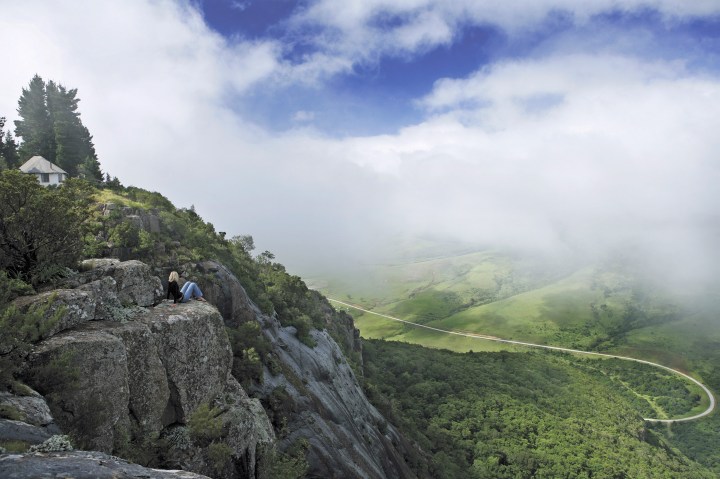SIGN OF THE TIMES
Semigration: Is it time to leave the city?

Why South Africans are making the move away from the cities in favour of small-town living.
They say home is where the heart is, and for many South Africans the heart is no longer beating the traffic, pollution and the hustle and bustle of overcrowded cities. Rather, there is a trend towards “semigration”, where people are moving out of city centres and pushing into more rural towns and villages.
“Semigration has been a significant trend in the South African residential housing market for many years… characterised, generally, by a move from inland parts of the country to the coast… starting in the Western Cape, Boland and Overberg but more recently in regions such as KwaZulu-Natal, the Eastern Cape and the Garden Route, too,” Dr Andrew Golding, the chief executive of the Pam Golding Property Group, explains.
“The latest new normal is more a decentralisation of urban living from the greater metropoles to urban areas in smaller towns and villages… [and] there has certainly been a marked acceleration over the past decade in the number of South Africans opting to semigrate.”
Why are people choosing to semigrate?
While there are pros and cons to any move, semigrators are usually motivated by “a better quality of life including less congestion, lower crime levels and a healthy outdoor lifestyle” that rural living offers, Golding explains.
These towns and villages, with a perceived higher quality of life, “usually also offer more affordable properties – which improves the prospect that their property investment will be a profitable one”, he adds.
“Many of the semigrants have families, and are choosing to relocate their homes to ensure a better quality of life for their children and often greater security. Good schools and an outdoor lifestyle are thus key considerations when relocating.”

South Africa. Eastern Cape. Hogsback. Image: Media 24/ Gallo Images
Maverick Life’s Malibongwe Tyilo, who is in the process of moving permanently to Hogsback from Cape Town with his partner, says the natural lifestyle is what convinced them to make the move.
“Hogsback’s peace, slow pace, the history of the surrounding area, and the opportunity to live a life immersed in natural surroundings is something we really felt we wanted at this point in our lives, and Hogsback is as immersive a natural environment as we’ve ever experienced.”
Diane Cassere, who made the move from Cape Town to Cradock, says the small-town community has made her and her partner, TGIF editor Tony Jackman, welcome, and that the people are the best thing to come out of the relocation.
“Karoo people are special and we have made wonderful friends. And our home. Having friends and a magic environment has been worth the move,” she says.
When it comes to careers, location might no longer be as important as it used to be – although this will depend on the industry one’s in, but following almost two years of disruption, the way we work has changed to incorporate more flexibility, at least in some cases.
“The rise of online working during the global pandemic has made the decision to semigrate more realistic and more appealing for a greater number of homeowners,” Golding explains.
Indeed, as Téa Bell writes for Maverick Life on office work versus remote work, “researchers anticipate that the option of working remotely is likely to become an increasingly important part of employees’ selection criteria when deciding between future career positions”.
Golding also notes that semigration is not only limited to those who can work remotely, adding that some breadwinners choose to semigrate their families, but themselves remain in the cities during the week and commute home for weekends.

Image: Milada Vigerova / Unsplash
And while a key consideration for semigrating families is the quality of education in more rural areas, Golding says some families have chosen to home-school their children, which is made even more possible thanks to e-learning.
“Today’s working world is made possible by cellphones, the internet and all the many social media connections. People all over the world are working this way and property prices here have improved as people, during a pandemic, think of moving to a healthier environment and working remotely,” Cassere says. Gone are the days where geography limits where one can work and live, which makes semigration appear all the more appealing.
Then, as more people turn to remote working, and are spending more of their time day by day in one space, the home is an important part of cultivating a positive quality of life. Semigrators are therefore often attracted to larger properties in rural areas compared with maybe smaller, cramped spaces in a city, and “it is likely that we will see people seeking more spacious homes with suitable workspaces”, Pam Golding Properties predicts.
Cassere explains that in Cradock she is now “able to afford space”, which was harder to come by and more expensive in Cape Town’s City Bowl, while in Hogsback, for example, “the area’s zoning regulations do not allow for properties to be cut smaller than 1.7 hectares”, which is about two rugby fields, offering buyers space that cannot be found in densely populated areas, Tyilo says.
Trends identified in 2020 echoed this, showing a shift towards “locations with a sense of space” as well as areas with “scenic, expansive views”, writes Golding, who also sees “green living” becoming even more preponderant. Thus, the larger properties that rural living offers give people the opportunity to work their land and become more self-reliant. This makes the prospect of a “bigger piece of ground where homeowners can grow their own vegetables and become self-sufficient” increasingly attractive, he says.

South Africa, Karoo, Eastern Cape. View of the Great Karoo and koppies (hills) between Nieu Bethesda and Cradock. Landscape shot shows the road running through in the middle distance. Scrub in the foreground. Image: MARYANN RIVERS-MOORE/ Gallo Images
How to prepare for the move
To the prospective semigrator, there are a few things to keep in mind. Most importantly, do your research on the area you are interested in. Infrastructure, local government, amenities, schools and medical facilities are all important things to consider, and it is worth keeping in mind that these are not always a given in more rural towns.
Golding tells Maverick Life that as more rural spaces have become more appealing, many former retirement and holiday homes have, or are being, redeveloped, which has seen “significant investments in medical, educational and retail facilities in these areas, making them more attractive to a young home buyer”.
However, this is not true of every space, and buyers should do their own research. “Look closely at the infrastructure of a town if you plan to move… Find out everything about the town or area you are going to. Be prepared,” Cassere recommends, explaining that the efficacy of councils and wards has an impact on Cradock as a whole.
“Things just don’t work and it is down to the residents of such a town to make them work. Be prepared for potholes, water outages, power failures, garbage collected randomly because the only truck is out of order, public officials who are only there to draw a salary. These are facts, and true of so many South African towns.”
It is not all doom and gloom though, and Cassere also acknowledges that community is important and can make all the difference when residents band together.
“You have to look beyond the incompetence and value the town and the people who live there. We all hang together and cope,” she says.

South Africa, Eastern Cape, Cradock, Market Street. View of cottages and museum in the street. The cottages are a National Monument and used as guest house accommodation. Image: MARYANN RIVERS-MOORE/ Gallo Images
Tyilo recommends spending time in your new area before making the move permanently, to help create a more realistic sense of what life there could be like.
“I would advise going to spend a significant amount of time, maybe a month if possible, especially if moving to a rural area, to truly see if you can handle the inconveniences of rural life, as well as get a sense of the community,” he says.
“It is important to spend time where you want to live, and know the challenges, then make sure you are prepared to deal with them in exchange for the rewards of rural living. If convenience and things that work as they should are very important to you, rural life might be very challenging. However, not everyone who moves to the countryside needs to move to a rural village, there are numerous small towns where the weather is better and there are a few more city-style conveniences.”
Although the adjustment may be difficult, if you can make it work, both Cassere and Tyilo are keen advocates for small-town living.
“We missed some things about Cape Town, our favourite restaurant, the Labia Cinema, having a Woolworths nearby, many things associated with city living that were not available here. But if you have the ability to adjust, change is invigorating,” Cassere says.
“My partner and I have always loved weekend getaways to quiet nature-type settings; and now to finally make that our permanent lives, and not having to wait a couple of decades for retirement to do so, is just one of the best realisations ever!” says Tyilo. DM/ML



















 Become an Insider
Become an Insider
Comments - Please login in order to comment.